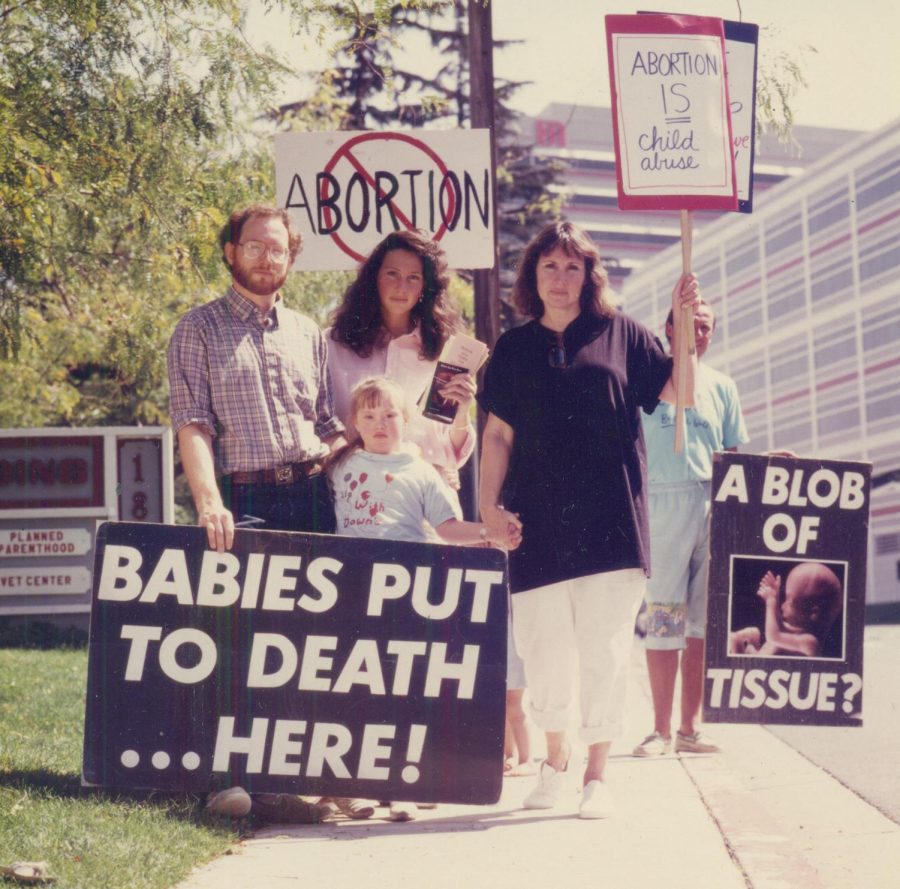Anti-abortion protests have been around significantly longer than Roe v. Wade itself, but the target of pro-life campaigns continues to shift as women achieve higher levels of gender equality.
Women were long depicted as victims of abortion – an image which has been distorted as women’s rights have advanced and women continue to make their own informed decisions to have an abortion.
Potential mothers were originally depicted as scared and misinformed, especially from the 1970s to 1990s. Anti-abortion groups offered help and love to distressed mothers, instead of spitefulness and rage at women for their choice to not be a mother.
Though abortion reform movements began in the 1960s, the new era of the pro-life savior complex occured during the 1980s and early 1990s. Operation rescue activities, typically consisting of protesters blocking clinics in the hopes of shutting down abortion clinics and prohibiting the entrance of patients, were arranged as an act of “civil disobedience” to save the lives of fetuses.
Anti-abortion protestors, who called themselves rescuers during this movement, even went as far as using extreme violence to stop abortions. Dr. John Bayard Britton was shot and killed along with a clinic volunteer in 1994 by Paul J. Hill, a former pastor. Hill was later quoted claiming, “I believe in the short and long term, more and more people will act on the principles for which I stand… I’m willing and I feel very honored that they are most likely going to kill me for what I did.”
Anti-abortionists continued with their rampant ways, wreaking havoc towards pro-life supporters. Between the early 1980s and the 2000s, there were 153 assaults, 383 death threats, three kidnappings, 18 attempted murders and nine murders related to abortion providers.
While “rescuers” would stop at no means to prevent a woman from having an abortion, potential mothers were typically kept out of pro-life campaigns. The Organization of American Historians wrote, “After 1973 the direction of pro-life activism changed, even as its demographics and core political arguments remained the same. While antiabortion activists retained their focus on individual fetal rights, they began to develop new ways to convey that message to the public that focused on the fetus and excised the woman.”
Making the fetus the center of campaigns instead of the mother herself was partially due to the Supreme Court’s ruling in Planned Parenthood v. Casey. In a 5-4 vote, the majority believed gender equality had progressed because of abortion access, leading to the conclusion that “Roe would never be overturned unless the majority of Supreme Court justices no longer believed that women needed abortion to be equal.”
With the focus of pro-life campaigns shifting from the mother to the fetus, anti-abortion activists played to an idea of moral obligation to the unborn to garner support for their movement. The infant-centered campaign is one still commonly seen today, but the eviction of mothers is a past trend in pro-life arguments.
To many pro-life supporters, feminism is seen as the root of all evil. Women’s rights and their freedom of choice are depicted as both selfish and inhumane. Anti-abortion activists discard the advancements feminism has made for gender equality and solely choose to believe strides towards equality have caused women to make immoral decisions.
“Because of the internalized misogyny that this country holds, women are the ones to blame when it comes to pregnancy even though it is a two person job,” senior Harper Clark said. “Women are seen as the immoral ones because the fathers don’t have to take responsibility.”
Quite often, anti-abortion protestors make women out to be self-centered as they chose their own life over a child’s, regardless of the reasons for doing so. In an attempt to squander freedom of choice, politicians and pro-life groups have begun cracking down on mothers themselves.
With Roe v. Wade on the rocks, states have continued to push proposals of overbearing abortion laws. Texas has banned abortions after just six weeks of fetal development, and in an attempt to completely crush freedom of choice, Missouri recently proposed a bill to stop residents from seeking abortions out of state.
There are a myriad of reasons why someone chooses not to have a child, ranging from pregnancy dangers to unfit conditions for a child. While anti-abortion campaigns often focus on the fact that life begins at conception, many fail to comprehend the impact nurture has on a child and their well-being. Simply bringing children into the world does not mean that the child will have the love, support or means to live a stable or supported life.
“I think people sometimes forget how much goes into raising a child,” Moline third grade teacher Kaylee Lance said. “There are so many kids who just have very rough home lives, and even though school is their outlet, there’s only so much we can do if kids aren’t supported or cared for at home.”
Though rational reasons exist as to why women have abortions, pro-life campaigns continue to paint modern women as criminals without morals when they choose not to bring a child into the world. As the freedom of choice continues to dwindle and women are portrayed as villains, it has never been of more importance than now for feminists to take a stand for their gender equality and for human rights.









